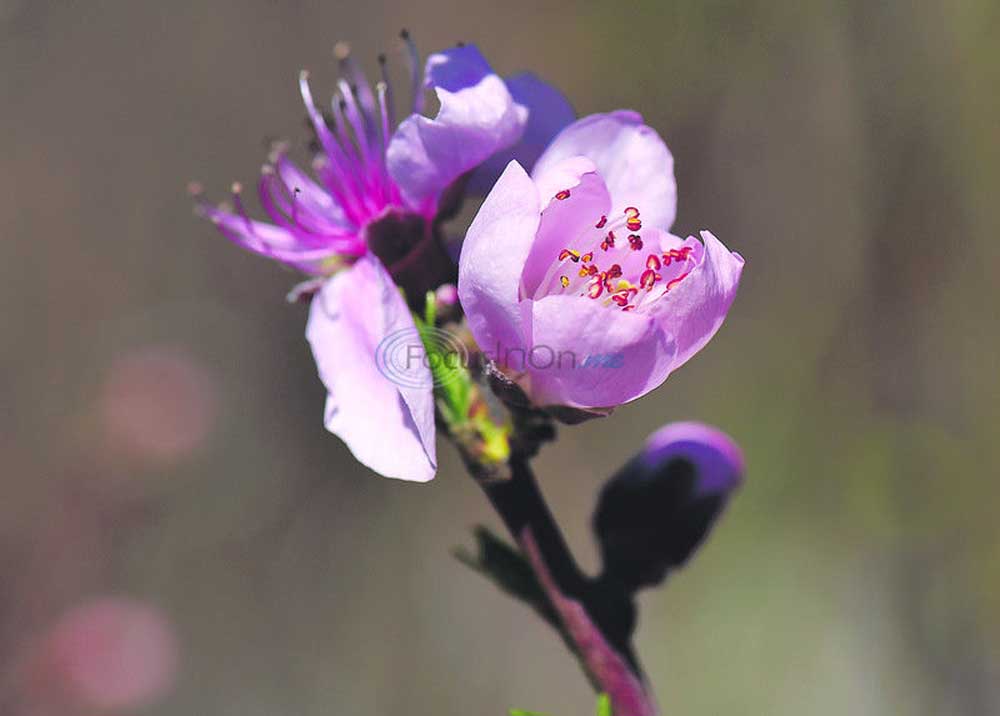Balmy spring-like weather poses threat to East Texas fruit growers
Published 4:46 pm Wednesday, February 24, 2016

- Peach blossoms soak up the sun Wednesday at Bob Wells Nursery in Lindale. The mild winter means fruit trees are starting to bloom early in the season, which could put East Texas fruit production at risk if a late freeze hits the region, current nursery owner Bobby G. Wells said. (Andrew D. Brosig/Tyler Morning Telegraph via AP)
Who hasn’t enjoyed all the balmy days – so unseasonal for February – East Texas has seen lately? And who doesn’t appreciate the new buds and tender leaves on the region’s fruit trees, vines and bushes?
Bob Wells. That’s who.
Trending
As a fifth-generation nurseryman, knows the fine weather actually is a threat to fruit crops in East Texas.
“We’re seeing a lot of the trees blooming out now,” Wells said, while walking between rows of fruit trees and staked vines at his family’s Lindale nursery. “The peaches, the plums, the pears. That’s a problem.”
The problem is winter probably isn’t through here. Another hard freeze could kill the region’s fruit crop.
“These plants need plenty of hours of cold – that’s below 45 degrees, not below freezing,” he said. “And they’ve had that. Even though the winter has been mild, they’ve gotten the rest they’ve needed. The problem is, now they’re ready to bloom at the first sign of spring.”
And a late frost could kill the fruit in the bud. The average date for the last spring frost in Smith County is March 1, according to the Texas A&M AgriLife Extension Service.
“One more warm spell, and then cold, would be all it takes for us to lose the whole crop of peaches and pears,” he said. “Blueberries, too.”
Trending
The warm weather was a hot topic at the East Texas Fruit and Vegetable Conference last week in Nacogdoches.
“This heat wave we’re currently having in East Texas is not good. It makes us glad we’re not living in New York, but it’s not good for the fruit industry,” said Monte Nesbitt, AgriLife Extension horticultural specialist.
Many at the conference were worried about a late frost, he added.
“I hope we all turn out to be wrong about that,” Nesbitt said. “But we really don’t know; if we don’t get another freeze, we could be fine.”
But as his agency pointed out, “late freezes in 2013 and 2014 caused widespread fruit production losses in many areas of the state.”
Wells has grown his own peaches and plums in the past, and even he’s not immune to the weather.
Last year, heavy rains left his orchards with standing water. And when finally that dried up, an early summer drought killed off what was left of his crop.
For home gardeners and casual growers, Wells recommends planting several varieties of each kind of fruit they hope to grow. Different varieties have different chill-hour requirements and bloom at different times.
For example, some peach tree varieties require 600 chill-hours and bloom earlier; some require 900 to 1,000 chill-hours and bloom later.
“You don’t want to put all your apples in one basket,” Wells said. “It’s good to mix in some higher-chill varieties. In a perfect year, you’ll get fruit from all of them. In a bad year, you’ll at least get some.”
AZALEAS, PECANS
VisitTyler (formerly the Tyler Convention & Visitor Bureau) also is keeping an eye on the thermometer. The Azalea & Spring Flower Trail is slated for March 25 through April 10.
“We are already hearing from some of our homeowners (along the trail) who say their azaleas are starting to bloom,” VisitTyler Vice President Susan Travis said. “And that’s a concern. Last year and the year before, we didn’t have azaleas because they bloomed late. This year, they could bloom early.”
If that happens, she said, there still likely will be some azaleas out during the trail, even though it’s a full month away.
“I feel sure we’ll have at least some this year,” she said. “And regardless, all of our other events will still go on.”
The economic impact of the Azalea & Spring Flower Trail last year was an estimated $1.58 million, down from 2014’s $1.8 million.
But there’s good news for the region’s pecan crop, Nesbitt said.
“Pecans require more heat units to break dormancy, so they are less likely to be hurt by late freezes than most of the other fruit crops,” he said.
Twitter: @tmt_roy






